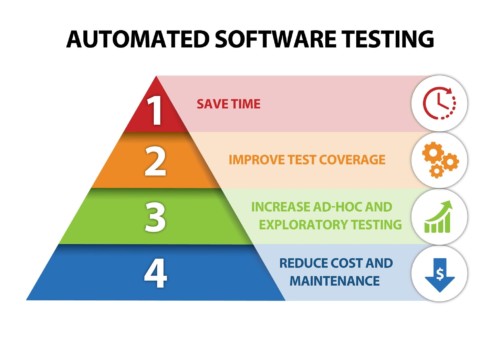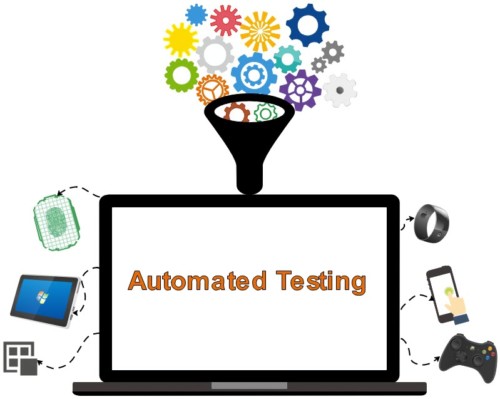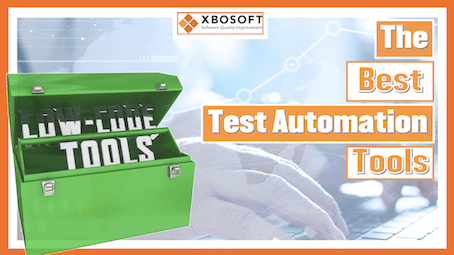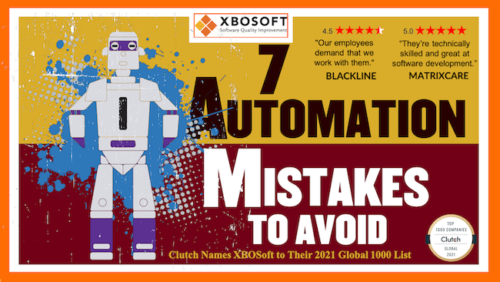XBOSoft Automated Software Testing Services
XBOSoft is a leading software testing and quality assurance company that offers a comprehensive range of services to help clients develop and release high-quality software products. One of our core services is our Software Test Automation service, which is designed to help clients automate their software testing process and achieve faster and more reliable results.
XBOSoft’s Software Test Automation service leverages the latest industry-standard tools and techniques to develop custom test automation solutions tailored to each client’s specific needs. Our team of experienced automation engineers work closely with clients to analyze their testing requirements, design and develop the appropriate test scripts, and execute them efficiently and effectively. Whether clients need to automate functional testing, regression testing, performance testing, or any other type of software testing, XBOSoft has the expertise and experience to help them achieve their goals. With XBOSoft’s Software Test Automation service, clients can expect to reduce their testing time and costs, improve the accuracy and consistency of their test results, and accelerate their time-to-market for their software products.
Automated Software Testing for WebApps and Mobile
Every software tester, QA manager, and quality assurance expert is familiar with automated tests and the associated challenges. If they work for a large corporation or ISV, automated testing is most certainly a critical component of the development and Devop/QA process and a daily hands-on effort. For those in startups or small companies, an ad hoc QA process with manual functional testing and regression testing probably works just fine (for the time being), but as the business grows and the product(s) grow over time in features and functions, the team will not be able to maintain quality standards without deploying automated testing. As a brand is established, the importance of delivering high-quality software also grows. Eventually, the QA team and its automated tests process must evolve to manage the expanding demands on their time, resources, and budgets. This is where you need a coordinated approach to test automation including the prioritization of where and when to automate, having the right team, and usage of software test automation tools.
Schedule a Test Automation Demo
Some of the key benefits of automated testing are:
- Save time – Significant time savings can be realized through test automation; in some cases up to 70%. Not every test case is suitable for automated testing, however. Frequent regression cycles and repetitive manual testing combined with tedious input of test data are situations where test automation may make sense. On the other hand, attempting to apply test automation to rapidly changing software, or highly dependent UX-related quality characteristics may not be suited for QA automation.
- Improve test coverage – Create automated software test scripts that cover more than you can do via manual testing with clear results that can help you increase platform coverage by 55% in the same testing cycle. That’s what our clients have done, why leave critical platforms uncovered when you can achieve coverage through QA automation.
- Increase ad-hoc and exploratory testing – With resources freed up by automated testing, testers can do what they do best. Find more critical defects by using your skilled QA resources in the right place at the right time via manual testing applied in strategic places.
- Reduce cost and maintenance – Use our minimal-maintenance automation testing services and infrastructure with a centralized repository and test automation framework that takes advantage of reuse and modularity so that changes can be done once and propagated throughout. Our proven test automation frameworks have saved our clients an average of 38% in automation re-work time and costs.
XBOSoft has been providing professional automated testing services for 15 years. In the world of automated testing and QA automation, we’ve seen a thing or two; from publishing topical Automated Testing White Papers, presenting at conferences, and holding Test Automation workshops, to providing day-in and day-out automated test services to clients globally. When and Where to automate, How to automate, and what test automation tools to use to automate can be challenging issues.
XBOSoft’s Awards and Recognitions
Automated Software Testing – When and Where to Start?
While the benefits are clear, automated tests do have their costs! Automated testing can often be expensive and difficult, especially given the array of test automation tools and the expertise needed to master them. Given any automated testing program will require some level of upfront investment in time, resources, and effort, when is the cost/benefit right for automated testing?
To help address this question, XBOSoft’s Automated Test Assessment White Paper discusses the factors involved in deciding whether or not to automate testing and then provides a step-by-step self-assessment to help you objectively decide whether or not to go forward with a test automation effort.
Automated Testing – How to Start?
It can be tricky trying to get the ball rolling on software test automation and then keep that ball rolling. Oftentimes, companies start by choosing test automation tools without thinking about an automated testing strategy and how it fits into the organization AND their software development and QA Testing process. For example, is continuous testing a long-term goal? A successful automated QA testing program begins with a firm baseline of understanding automation testing. The two resources below can be a good start for those in the early stages of research:
Automated Testing Basic Guidelines – This white paper covers how to get started. It covers areas such as; How to select the right automated tests tools depending on YOUR criteria, including how to integrate manual testing and test automation within the QA testing process; Practical lessons and step-by-step procedures for building a framework; Coding tips; interfacing with Unit testing, and Rules to follow for easy maintenance of test scripts. It also points out typical areas prone to failure and how to avoid them.
Automated Testing Best Practices – We don’t like to use the phrase Best Practices, so that’s why this paper is V2. Over time, our practices change according to changes in technologies, methods, and business requirements. Additionally, Best Practices for some are not best for others. In any case, we’ve listed some Great Practices so that you can pick and choose which ones are BEST for you, your quality assurance process, and your automated testing goals.
Automated Testing – Kick Start Your Program
If you are looking to kick-start your test automation efforts, XBOSoft’s cost-effective automation assessment and implementation program will take you from 100% manual regression QA to the “right” balance of automation and manual testing in as little as 30 days. We utilize a straightforward 4-step process:
Step 1
We believe you can’t automate what you don’t understand, so our initial objective is to understand the client’s automation goals combined with an examination of their software to understand its workings and functionality. XBOSoft deliverable – Client Test Automation Objectives Briefing
Step 2
Determine a set of automated software testing tools for the client’s software. Note: if the client already has such tools this step would be skipped. XBOSoft deliverable – Automation Tool Feasibility Briefing.
Step 3
Determine automated qa testing strategy to identify where the software can effectively benefit from test automation, followed by test architecture and design. XBOSoft deliverables – Test Automation Strategy Document; Automation Test Case Design and Parameterization Guidelines, and Automation Framework Design Guidelines.
Step 4
Create executable automation scripts with written instructions on how to set up the test environment, deploy and execute the script.
XBOSoft often supplements the above with guidelines on enabling maintainability and extend-ability, and incorporating best practices in the analysis of test results. Learn more about our Automation Assessment & Execution Program.
Automated Software Testing Services – Case Studies
XBOSoft possesses nearly 10 years of software test automation service experience, working with clients big and small, near and far. The two selected Case Studies below give a good example of the long-term automated testing services we have been providing to clients over the years.
Akva Case Study – The Norwegian company, AKVA, is a leading technology and service partner to the aquaculture industry worldwide. For over 30 years, AKVA has offered software tools that cover all a company could need for process control, production control, reporting, and planning of fish farming and seafood productions. In 2009, XBO began providing manual testing services for functional testing but has expanded the service offerings to include comprehensive test automation.
Mitel – Based in Ontario, Canada, Mitel is the world’s fastest-growing provider of cloud communications, making more than 33 million cloud connections daily. Mitel serves more than 60 million users in more than 100 countries. XBO began providing testing services in 2010 to Benbria, at the time a small start-up whose product division was acquired by Mitel in 2016. Today, XBO’s testing services include API Automated Testing and Selenium Automated Testing.
Automated Software Testing Tools – Choosing the Tool for YOU
When you embark on an automation project, there are numerous obvious criteria that come to mind, like costs and licensing fees, and less obvious like continuous testing goals, and how unit testing integrates with QA. Cost is one factor of course, and for that reason, many organizations go the way of open source. Open source tools have the advantage of community support. But beyond that, we believe some of the key factors in choosing a test automation tool are directly related to your organization and its software:
-
- Object recognition: Before you go full-bore down the path of any tool, make sure it can recognize your objects. Without object recognition, you won’t be able to control your software and automate testing.
- Script organization and structure: Make sure that the tool has easy methods for you to organize your scripts and structure them in a logical way that matches your software’s functionality.
- Parameterization flexibility: In order to ensure code reusability and lower maintenance issues, test the abstraction levels that you can use that you can employ to make the code as maintainable as possible.
- Data-driven capabilities: Along with parameterization, this is one of the most important criteria. In order to automate more complicated logic and increase script maintainability, you’ll want to put your test data in separate files from the scripts themselves. You’ll also want to take results data from one script execution and use it as input to other scripts.
- Execution scheduling: Automation should not only mechanize manual testing but should also automate the execution. Make sure you can schedule individual scripts as well as suites of scripts easily based on your script organization and structure.
- Expertise required: If you just want to record and play, that’s fine, but recognize that this may make your scripts difficult to maintain. You may choose to, and have to go this route though if your organization’s test scripting capabilities are limited. However, make sure that recorded scripts can be organized well and that the code can easily be parameterized and modularized.
- Reporting and results from the analysis: Probably one of the most often overlooked criteria is how you’ll be able to analyze the results and ultimately use them to improve your software quality. If the test results are not easy to get, easy to understand, and take action, then why are you automating?
In summary, choosing an automated software testing tool needs careful consideration of these factors and many more. Make sure you’ve got the expertise to really test these tools out to make sure they can satisfy your needs today to get going quickly, but also your needs down the road when you have 10000 scripts to manage and execute.
Clients Who Trust XBOSoft
Recent Automation Testing Blog Posts
The Best Test Automation Tools Guide In 2023
By Jimmy Florent | January 5th, 2023
Choosing the best test automation tool requires you to understand that all test automation tools are not alike and that all software applications are different. That’s because they must have capabilities that match the software under test, and the software under test must have clear objectives for using test automation.
5 Of The Biggest Challenges In Automation Testing
By Jimmy Florent | January 3rd, 2023
Discover the biggest challenges in automation testing, experienced even by seasoned practitioners. When it comes to automation testing, most businesses excitedly say “yes” until they are told it’s more “yes, maybe, no” than simply “yes”.
Seven Test Automation Mistakes to Avoid
By Amy Dong | May 20th, 2019
Thinking that automation can do it all (100% automation). We’ve all heard this before, believing machines can do everything. They can’t (not yet anyway). For automation, the “tool” needs to be taught. The question is how much effort will it take you to ‘teach the tool’?









